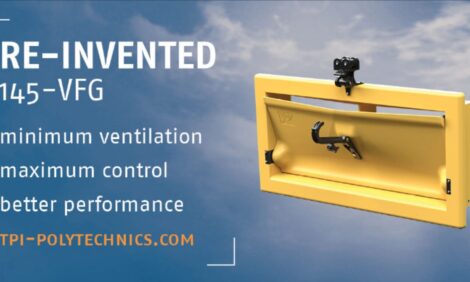



GB Emerging Threats Report – Avian Diseases – April-June (Q2) 2013
Among the highlights of the latest report are the identification and description of reovirus-associated tenosynovitis in broilers, an unusual case of granulomatous myositis in free-range layer hens and vitamin A deficiency in a hobby flock.Highlights
- Submission trends: Decrease of seven per cent in the total number of avian diagnostic submissions to AHVLA and SAC during Q2-2013 compared with Q2-2012. Drop in avian carcase submissions and continued upward trend in the numbers of non-carcase diagnostic submissions. Approximately 25 per cent of Q2 avian diagnostic submissions were from game bird flocks with onset of breeding and rearing season, and two-thirds from chicken flocks.
- New & Re-emerging diseases: Identification and description of reovirus-associated tenosynovitis in broilers.
- Unusual diagnoses: Include granulomatous myositis in free-range layer hens and vitamin A deficiency in a hobby flock. A selection of other cases has been described in the monthly surveillance highlights reports published in the Veterinary Record by AHVLA and SAC.
- Changes in the industry and disease patterns: Confidence sustained in the poultry meat sectors. Changes to retailer sourcing policies for fresh poultry and non-GM soya. Egg producers continue to be challenged by weak market, despite drop in feed prices and reductions in the size of the national flock.
New and Re-emerging Disease and Threats
During Q2-2013, no new and re-emerging diseases were identified in Great Britain for layers, layer breeders, turkeys, turkey breeders, ducks, geese, game birds and backyard flocks. One new and emerging threat was identified in the broiler sector, described below.
Reovirus-associated tenosynovitis in broilers
Investigation of an episode of swollen hock joints and lameness affecting commercial, housed broiler chickens from three weeks of age resulted in the isolation of a reovirus from affected hock tissues, indicative of reoviral arthritis.
This condition is recognised as being typically sporadic in broilers (Jones, 2000). Other flocks in the same integration, which routinely includes reovirus vaccination in their parent stock, were also affected. Furthermore, other specialist poultry PVS (PPVS) have also reported similar clinical presentations, and increased rejects at processing associated with swollen hocks, in reovirus-vaccinated integrations.
Morbidity has ranged from 10 to 40 per cent. Affected, unvaccinated flocks have also been reported. Further enquiries indicated an increasing frequency of similar cases during 2013, with affected flocks first identified in GB in November-December 2012. An apparently similar condition has also been reported recently in Europe associated with a novel reovirus strain, with broiler flocks affected since 2011 (Troxler et al. 2013).
Investigations are continuing to further characterise the reovirus isolated from the case most recently investigated by AHVLA Weybridge. The isolated strain can be serologically differentiated from the chicken reovirus reference strain - S1133 - by virus neutralisation test. Prevention and control of reovirus infections is based on vaccination of broiler breeders to protect chicks by maternally derived antibodies, with homologous strains giving optimal protection. The S1133 strain forms the basis of commercial reovirus vaccines for chickens.
PPVS reports indicate that standard reovirus vaccination of broiler breeder flocks is not affording protection, similar to the European experience (Troxler et al., 2013). Therefore, alternative vaccination strategies are being considered, as well as ensuring good hygiene and biosecurity practices in broiler supply chains. Veterinary investigation of affected flocks and differential diagnoses is also important so that appropriate treatment and control measures can be implemented.
Reoviruses are considered ubiquitous in poultry, can cause other diseases in chickens and are not associated with public health or international trade implications.
The situation will continue to be monitored through AHVLA scanning surveillance activities and PPVS contact. AHVLA would therefore also be interested to hear from colleagues who have experienced any similar cases.
Unusual Diagnoses
Granulomatous myositis in free-range layer hens
A granulomatous myositis was identified following histopathological examination of superficial pectoral muscle. White, occasionally streaky, focal lesions had been observed in the pectoral musculature during a field post-mortem examination of four fatalities in a recently purchased, moulted flock of 3,000 hens aged 18 months.
The flock had been moved to free-range conditions two weeks earlier. The lesions were suspected to be a sequel to previous bacterial infection, possibly associated with vaccination.
Ground resting, rather than perching, with skin trauma was also considered a possible causative factor. Appropriate veterinary advice was provided.
Vitamin A deficiency

The loss of one of a flock of 27 adult, mainly rare-breed hens was investigated. Clinical signs of lethargy and increased respiratory effort were reported over the preceding 48-hours.
At post-mortem the oropharynx of the submitted bird was distended with thick, foul-smelling, cheesy material extending into the proximal oesophagus (Figure 1).
Histopathology revealed marked squamous metaplastic change of the columnar epithelium of several submucosal glands, suggestive of vitamin A deficiency. No evidence of other potential causes (e.g. pox virus, trichomonosis) was found.
This condition is rarely diagnosed, with only one case recorded in VIDA over the last eight years. A dietary insufficiency was suspected.
A number of other unusual diagnoses were made in backyard and commercial poultry during Q2-2013. A selection has been described in the monthly surveillance highlight reports published in the Veterinary Record by AHVLA and SAC (AHVLA, 2013; SAC, 2013a-d). In these cases, no wider threats were recognised and no specific actions required other than for producers and veterinarians to maintain vigilance for disease problems and investigate as appropriate.
October 2013











